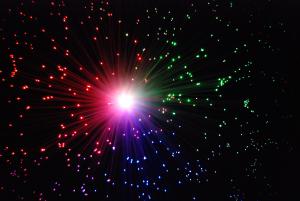Blog
A Tired Old Tale
15 July 2023
 Wikipedia user Annatsach (CC BY 4.0)
Wikipedia user Annatsach (CC BY 4.0)When the James Webb Space Telescope started collecting data, it gave us an unprecedented view of the distant cosmos. Faint, redshifted galaxies seen by Hubble as mere smudges of light were revealed as objects of structure and form. And astronomers were faced with a bit of a problem. Those earliest galaxies seemed too developed and too large to have formed within the accepted timeline of the universe. This triggered a flurry of articles claiming boldly that JWST had disproven the big bang. Now a new article in the Monthly Notices of the Royal Astronomical Society argues that the problem isn’t that galaxies are too developed, but rather that the universe is twice as old as we’ve thought. A whopping 26.7 billion years old to be exact.1 It’s a bold claim, but does the data really support it?
The model proposed in the paper begins with something known as tired light. In the tired light model, light spontaneously loses energy over time. So as photons travel billions of light years through the cosmos, they become redshifted. Thus, the light of distant galaxies is redshifted not because of cosmic expansion, but because of the inherent reddening of light over time. The idea of tired light has been around since Edwin Hubble first observed cosmic expansion as a way to maintain the idea of a steady-state universe. It lost popularity as the evidence for cosmic expansion became clear, and regained some popularity as the Webb observations started rolling in.
We’ve long known that tired light doesn’t work on its own, so this paper adds a new twist dealing with universal physical constants. Quantities such as the speed of light, the charge of an electron, or the gravitational constant seem to be built into the structure of the universe. They have the values they do because of the way the universe formed, and it’s generally assumed they don’t change over time. We have geological and astronomical observations that show physical constants haven’t changed for at least several few billion years.
 Ned Wright
Ned WrightBut this new paper argues that if you combine tired light and changing physical constants, you can get a universe that appears younger than it actually is. Basically, tired light gives you the cosmological redshift you observe, and gradually shifting physical constants means those mature distant galaxies aren’t just 100 million years old, they are billions of years old. By tweaking tired light and variable physical constants just so to match the data, you get a universe that is 26.7 billion years old.
Does the model work? Yes, but there are two problems with it. The first is that tweak theories are weak theories. While this model can be made to fit observational data, there’s no physical motivation for doing it. There are lots of models that can be tweaked to fit data, which is not the same as having a robust physical model. The author of the work argues that there could be some underlying mechanism that causes tired light and the physical constants to shift in just the right way, but there is still a lot of fudging in the model.
The second problem is that JWST’s observations don’t rule out the standard 13.7 billion-year-old universe. The galaxies are more complex than some computer simulations have predicted, but that’s not surprising given the limits of large structure models. There are plenty of ways early galaxies could have evolved quickly that don’t require rewriting cosmology.
But even without a strong physical motivation to create this model, the work is still useful. It’s the kind of paper that thinks outside the box, which is a great way to make sure we aren’t locked into old models just because they’ve worked so far. It isn’t likely that this new model overturns standard cosmology, but as long as ideas are testable and disprovable, as this model is, there is no harm in adding it to the pile of ideas.
Gupta, R. “JWST early Universe observations and ΛCDM cosmology.” Monthly Notices of the Royal Astronomical Society (2023): stad2032. ↩︎